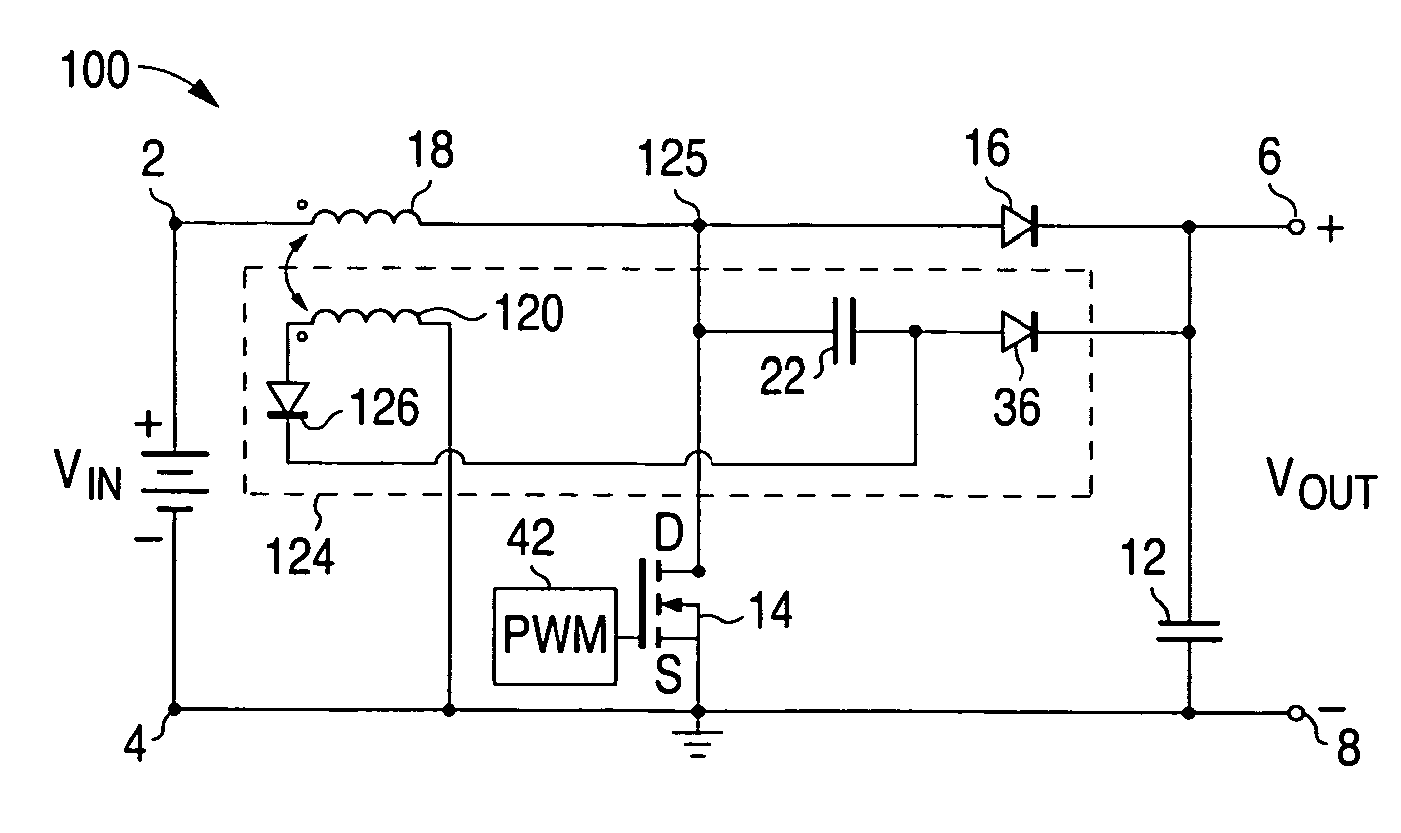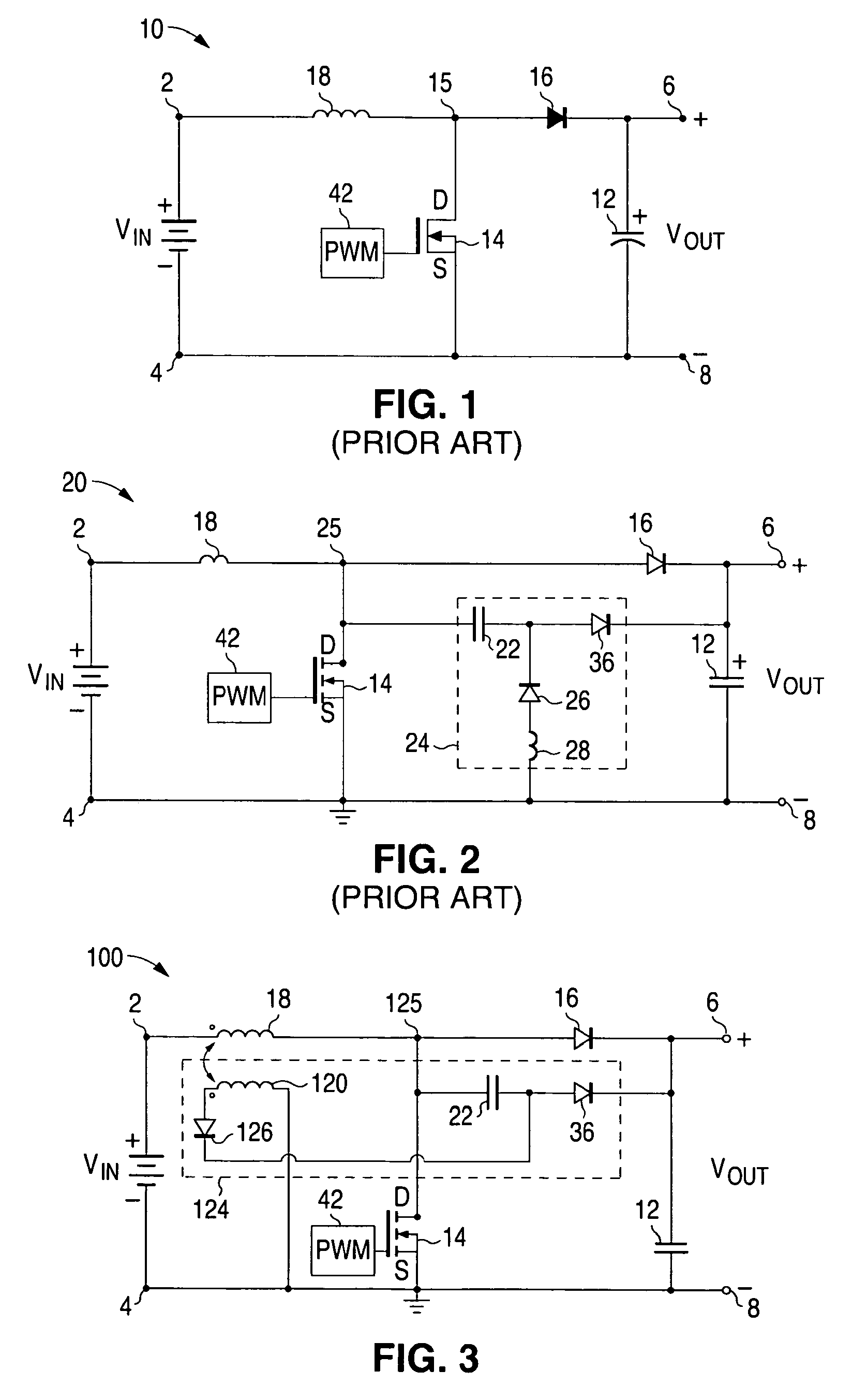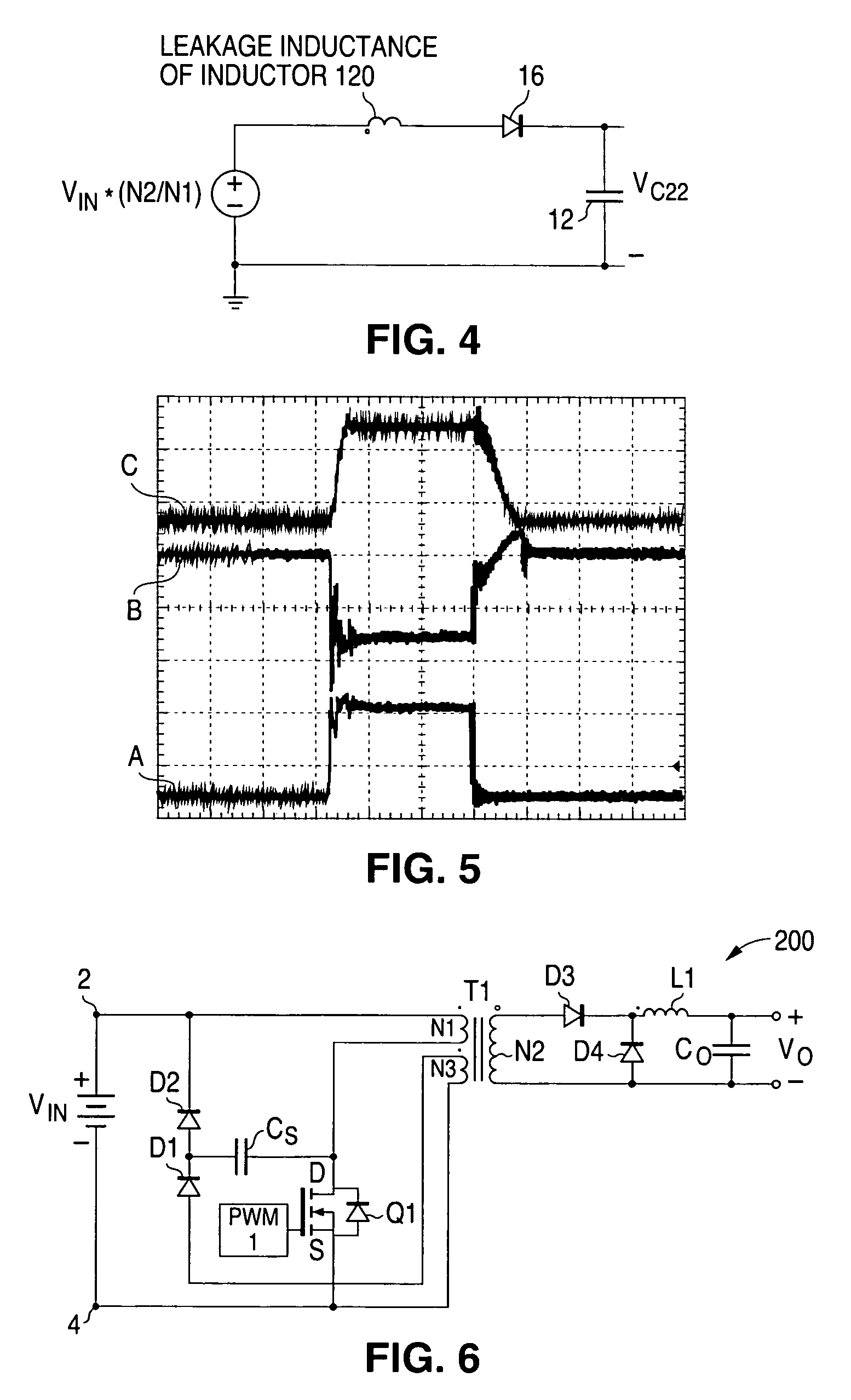Snubber circuit for a power converter
a power converter and circuit technology, applied in the direction of electric variable regulation, process and machine control, instruments, etc., can solve the problems of low efficiency power conversion, voltage across capacitor b, inability to control, etc., to reduce switch conduction and turn on losses, easy control, and small cost
- Summary
- Abstract
- Description
- Claims
- Application Information
AI Technical Summary
Benefits of technology
Problems solved by technology
Method used
Image
Examples
Embodiment Construction
[0023]The circuit and boost converter topology according to the present invention provides a resonant snubber for reducing the voltage spike developed in the drain of the main MOSFET switch caused by the large current pulse and the parasitic inductance.
[0024]FIG. 3 is a schematic diagram of a preferred embodiment of the snubber circuit 124 and boost converter according to present invention. Boost converter 100 comprises a snubber circuit 124 added to the boost converter 10 of FIG. 1. The snubber circuit 124 is designed to suppress the spike generated at the drain of MOSFET 14 caused by the large current pulse and the leakage (parasitic) inductance in the circuit when MOSFET 14 is turned off and to transfer this energy to the output. The snubber circuit 124 includes a series combination of a capacitor 22 and a diode 36 connected across s diode 16. The capacitor 22 is connected at one end to the junction of the inductor 18 and the diode 16 at a node 125. Snubber circuit 124 includes a...
PUM
 Login to View More
Login to View More Abstract
Description
Claims
Application Information
 Login to View More
Login to View More - R&D
- Intellectual Property
- Life Sciences
- Materials
- Tech Scout
- Unparalleled Data Quality
- Higher Quality Content
- 60% Fewer Hallucinations
Browse by: Latest US Patents, China's latest patents, Technical Efficacy Thesaurus, Application Domain, Technology Topic, Popular Technical Reports.
© 2025 PatSnap. All rights reserved.Legal|Privacy policy|Modern Slavery Act Transparency Statement|Sitemap|About US| Contact US: help@patsnap.com



